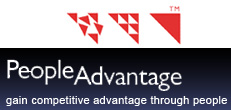Organisations are always concerned about risk management. However when developing and implementing risk management the role of people is often either taken for granted or simply forgotten.
People are critical for risk management. How does risk management happen? Answer: The awareness and actions of people. Where is the greatest risk in organisations? Answer: People.
The steps in developing a risk management system need to include:
1. Role definition; Build risk management into every role across the organisation. Be sure to capture the complexity of each role at each organisation level.
2. Assess how well your people can manage risk within the context of their individual roles
3. Develop an organisation wide Risk Management Profile.
4. Plan and organise learning and development for people.
5. Monitor people’s behaviour.
6. Take action to improve the capability of the organisation and individual people to manage risk.
Dallas Burgess
© Organisation Renewal Pty Limited 2008
.

